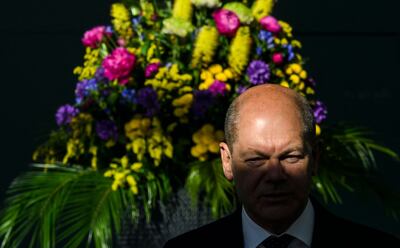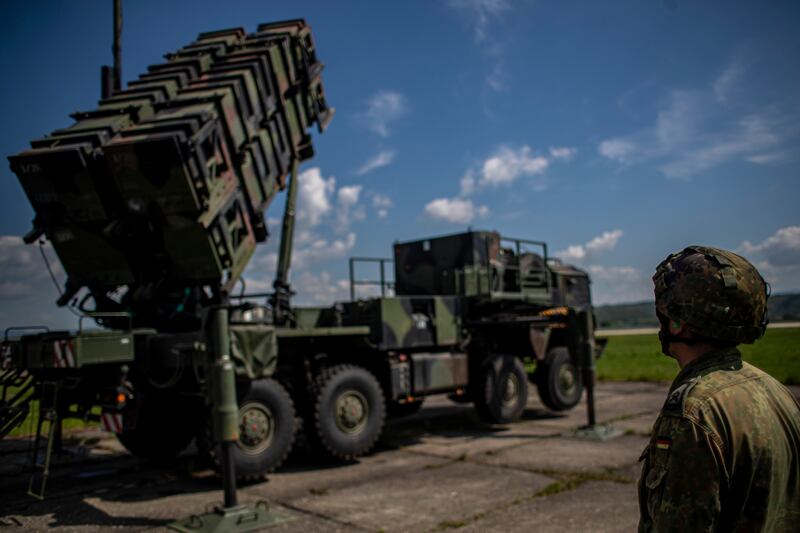No sooner had Germany launched its one-off €100 billion ($107bn) defence spending splurge three months ago than the questions began.
For military build-up advocates, the special budget represented a windfall that could overcome the degraded nature of the republic’s armed forces. But as the Greek philosopher Aristotle warned in ancient times, an abundance of wealth suddenly accumulated can be as much of a curse as it is a boost.
He highlighted the issues of hubris linked to wealth, breeding a behavioural attitude that defines spending as a virtue in itself. Thus, the windfall can blind the beneficiary to the purpose or effectiveness of the spending. (Rendered as hubris, the term is now used as shorthand for arrogance.)
So when the German government last week announced how it would allocate the funds, the obvious question was if the money was being spent well.
The headlines have not been terrible for Berlin as it launched the programme. There is a big slice of spending for the world’s most advanced fighter jet, the US-made F35. Another big tranche of orders for the king of heavy-lift helicopters, the Boeing-made Chinook was also applauded.
Chancellor Olaf Scholz defined three objectives for the spending. "We need planes that fly, ships that set sail and soldiers who are optimally equipped for their missions,” he said.
Eva Hogl, the parliamentary commissioner for the armed forces, recently exposed the German army’s failure to procure cold weather-appropriate fatigues for its troops in Lithuania. Not even the underwear was appropriate for the conditions.
Ms Hogl, a member of the Social Democratic Party, has her own views of the needs in defence spending. She has, for instance, criticised the decision by the German government to end conscription in 2011. This is primarily for political reasons as she traces the rise of far-right sympathies in the ranks of the military, something that has been flagged as a concern and threat by the country’s own intelligence agencies.
The Russian invasion of Ukraine has raised issues for many European countries about the size of their militaries. For future societies, there is a need for populations to bolster their own defences. For most, the model after the Cold War was very much based on a small core of military professionals.
Some countries have, of course, maintained a full-spectrum approach of military, conscription, civil contingencies and active social preparedness drills in schools and workplaces. Call it the Finland approach. Or the future.
With its windfall, Germany is, instead, scrambling to push forward the technology and equipment gap with €100bn upfront. Addressing the future size of the military and its structures has been left for another day. This would seem to be foolhardy and risks the sort of flaws in the spending that the Greek philosophers would swoop on.
Throughout the Ukraine war, Germany has been under pressure to show that it is determined to reverse its strategic commitment to Russia’s integration with Europe. The key immediate test for that has been its willingness to provide arms to Ukraine’s defence efforts in the way that the UK and the US have sought to promote.

Last week, Mr Scholz told the German Bundestag of dozens of weapons systems that Berlin had lined up to deliver to Ukraine, either later in the summer or in the autumn. But Germany’s own BND intelligence assessment is that Russia can take control of the Donbas by August.
The key point is that Germany has not delivered a single heavy weapons system, which puts a huge question mark not just about competence but its leadership. The choices on the list of new equipment are top notch. In fact, big-ticket items suspiciously resemble a set of selections that would be made in rush.
But the Ukraine war is showing up just one type of threat. If the world on the whole is becoming more threatening, this conflict will highlight only a fraction of the new dangers. And that’s where the German plan fails to convince. It is a big-headline figure and a shopping list.
Choices do not appear to have been weighed or taken with a cold self-interest. It even appears light on the type of weaponry and modern electronics systems that seem to have given Ukraine an edge in the battle with the heavy hammer employed by the Russian military.
There is no sense that the Germans are preparing for European defence integration, where it would play to its undoubted strengths. Nor is there much sense that the Nato alliance is also undergoing a parallel build-up. Co-ordination between the members is going to be the best way to maximise the impact of this expansion. As a big manufacturer of arms, Germany has a key role to play. Yet, it cannot deliver the advanced tanks promised to Poland to backfill Warsaw’s gift of Soviet tanks to Ukraine.
Instead, the Germans now reveal they have only a handful of the tanks for themselves, never mind a production line rolling them out for others.
Another Greek philosophical contribution is the concept of the Wheel of Fortune. The idea of a turning wheel providing an opening or a moment of opportunity to take advantage is something that Mr Scholz should examine in a quick study.





